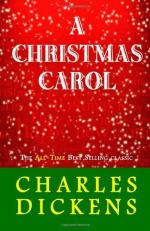|
This section contains 6,968 words (approx. 24 pages at 300 words per page) |

|
SOURCE: “The Primitive Keynesianism of Dickens's A Christmas Carol,” in Studies in the Literary Imagination, Vol. 30, No. 1, Spring, 1997, pp. 51–66.
In the following essay, Erickson provides a Keynesian economic interpretation of Dickens's novella.
In the transformation of Ebenezer Scrooge's character and in the very appearance and production of A Christmas Carol as a Christmas gift book, we can see Dickens's understanding of the psychological basis of economic activity and his intuitive solutions both to the financial depression that gripped England in 1843 and also to the specter of bankruptcy that loomed over him when his readers could no longer afford to buy his novels in numbers as large as before. By seeing both the psychology of Scrooge and also the physical form of A Christmas Carol in terms of Keynesian economic principles and in the larger context of early Victorian economic history, we can understand them as aesthetic responses to...
|
This section contains 6,968 words (approx. 24 pages at 300 words per page) |

|


